Are you trying to decide where to go on your Christmas holidays and still haven’t made up your mind? Why not consider Christmas in Greece?
There are numerous references of customs and traditions around Greece since the ancient years to celebrate the winter solstice, also known as Saturnalia, an ancient festival to honor Saturn, to celebrate the renewal of light and the coming new year, it is the “Birthday of the Unconquerable Sun”, the predecessor of Christmas.
In modern days, jubilant melodies and fairy tales are enough to spark your fantasy, so let your main human senses guide you, enjoy the smell, the aromas coming from the kitchen, see the decorated Christmas boats, houses, streets and squares, listen the bells, the Carols (traditional Christmas songs), feel the warmth of family and friends.
These days are unique in every region in Greece and each of them has their own customs and traditions… let’s travel together and explore some of them…
Epirus
The flaming yew!
In the villages of Epirus, up in the northern corner of Greece, this tradition emerges centuries back…That of the flaming yew. The story says that when baby Jesus was born, the three shepherds had to walk through the pitch black night to go and greet the baby’s birth. In order to find their way in the darkness, the shepherds thought of setting fire to dry brunches of yew which they would hold during their long nocturnal journey.
This is exactly what they did and – at once – their dark way through the mountains became a trip in the company of ample light and squeaky noises and rattle by the flaming brunches!
Even still in our days, if you find yourself in the villages of Epirus for a Christmas break, you will come across people walking and holding flaming brunches of yew or any other tree brunch that rattles as it burns, just for the fun of it. People will walk around the little picturesque village alleys to go to their neighbours and wish them “Merry Christmas”, joyfully holding their burning yews. The more squeak and rattle the brunch makes…the better!
In the city of Ioannina, in Epirus, the locals have a similar custom where they hold a bunch of bay leaves or yew which they will throw in the fireplace of the house they are visiting, alongside loud wishes for a joyful Christmas! As you might have guessed…the more fire, squeak and rattle the bay leaves and yew make in the fireplace, the stronger the wishes will be for the people who are present.
Thessaly
Feeding the fountains!
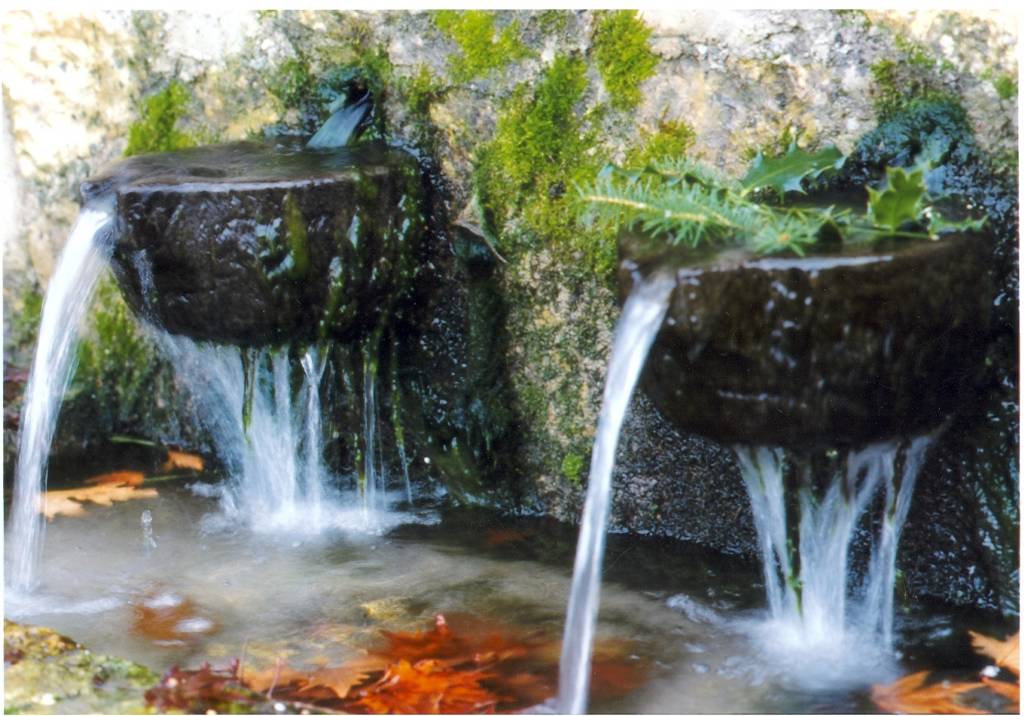
At midnight of Christmas Eve the feeding of fountains take its place in the villages of Central Greece. The young women are going to the closest fountain to “steal”the so called “speechless water”. During their way the girls remain silent. Since they get the water, they spread the fountain tap with butter and honey and wish a good luck in their lives, a good harvest for their corps in the same way as the water flows and, as sweet as honey is, they wish to have a sweet life.
They use to feed the fountain tap with various delicacies, like butter, bread, olive brunches, cheese or legumes depending on what they are harvesting. The girl that arrives first will have the best luck for the whole year. To continue with this ritual tradition they put in their ewer a briar leaf and three little gravels, they “steal” water and return back home speechless until everyone in the house drinks from the water.
Finally, they sprinkle some water from the ewer on the four corners of the house and they scatter the three gravels in the house. According to the folk tradition, brier is used to bring optimism and good news and also to drive away any incantation.
Macedonia
The wedding of fire!
In the villages of Edessa during Christmas Eve, according to tradition they make “the wedding of fire”. The local people “marry” in fire different types of wood, taking one female name tree like cherry tree ‘kerasia’ and one male name thorny tree like briar tree ‘vatos’.
They place the woods onto the fireplace to be burned and depending on the bang or the type of fire that is created, it helps them predict the future weather or the future corps. According to the tradition, the thorny trees drive away evil spirits, like goblins.
In Thessaly, while returning from the church, girls put next to the fireplace sprigs of cedar and boys sticks of wild cherry. Those svelte branches represent their desires and wishes for a good life. Both boys and girls watch with interest which branch will burn first, as this is a good sign for the kid who will marry first.
Jesus wood or Christoxylo!
In the villages of northern Greece, in Macedonia, on Christmas each householder searches in the fields for the sturdiest and thickest wood of oak or olive tree and brings it home. The housewives must have cleaned the house with care, especially the fireplace, so that there’s no ash left. They even clean the chimney to make it difficult for goblins and evil demons to climb down, as Christmas folks say. On the evening of Christmas Eve, when the whole family gathers around the fireplace, father lights the new fire and puts Jesus wood in it and let it burn slowly for the next 12 days from Christmas till Epiphany. It is said that the ashes of this wood protect the hearthstone and the family’s crops from evil spirits.
Thrace
Custom of “Rougkatsia”!
In Pythian, toddlers came out on the streets to tell the ‘kollianta’ or carols one day earlier than the Christmas Eve.
The boys from early in the morning poured in the streets of the village and chanted: “Colin, Dad chick, chick, chick …”On the day of Christmas the lads of the village where divided into small groups of four people, so called “Rougkatsia” and went around all the houses. On the way they called songs on the street and into the house: “Forty-Mary carter that we have Christ..”.
The “Rougkatsia”, when they entered the house and sat where they put the housekeepers, sang alternately two of the above songs, as the song is really long and without pauses, making it more difficult. Moreover, they had to sing it in many houses till late at night. When “Rougkatsia” were visiting a house, there had to be there all the members of the family. They were sitting, singing, eating treats, then they used to take a tip and leave for the next house.
Peloponisos
Breaking the pomegranate or the Pothariko!
A very old, since ancient times, custom that started from Peloponissos and spread out in more regions of Greece, was the so called ‘breaking the pomegranate’. They believed that pomegranate has a unique power hidden within its numerous seeds (abundance and fertility), but also for the red-purple colour, known as the colour of bringing luck and happiness.
In the morning of New Year’s Day, the families return from church with the father or a male from the family holding a pomegranate which has been blessed, rings the doorbell and is the first to enter as a guest with the pomegranate in his hand to bring good luck. It is also known as the ‘Pothariko’, the man of the house himself must be the first to step over the threshold of the house with their right foot.
While entering, he hits the pomegranate on the floor, behind the door, so that the seeds scatter all over the place, and at the same time says: “good health, happiness and joy to all of us; let money flow in our home like the seeds of the pomegranate”. And children look if the seeds are crispy and deep red. If the seed are good and pretty, it means that the New Year will be blessed and happy.
Crete
“Christópsomo” (Christ bread/cake)!
The Christmas cake is prepared and kneaded by the women with special reverence, persistence and patience. There is a ritual way behind this procedure.
The ingredients used are expensive, like riddled flour, rosewater, honey, sesame, cinnamon and cloves. As kneading is taking place women say: ‘Jesus Christ is born and the light goes up to make the dough expand’.
As long as they knead the dough, they take the half of it and make a bagel, while, with the rest of it, they will make a cross and place a walnut or an egg in the centre of the bagel which symbolizes fertility, and in some cases they decorate the rest making flowers or birds, using a knife or a fork.
Christmas cake is eaten on Christmas Day and is considered blessed bread, as is the one that will help the whole family in the New Year. They cut it in pieces giving good wishes. In the old days they also used to give some of these bread to their animals too, mixed with their food to be blessed.
Islands
In Cephalonia or Kefallinia Island, women burn incense at the front door of their houses making the sign of the cross in order to repel these undesirable “guests”.
At noon, women cook pancakes and in the evening, residents of Argostoli go to the church holding colognes and sprinkle passersby. On the way back, they break a pomegranate at the entrance and they count its seeds. Each seed symbolizes a wish that will come true the new year. The “kallikántzari” (hobgoblins) disappear on the day of Epiphany when all the waters are blessed, and they return to the earth’s core.
However, due to the miracle of Christ’s birth, they find the earth’s tree trunk completely restored, so they start their mission to destroy it all over again.
Meanwhile, in the island of Chios, on New Year’s Eve, the custom of Santa Claus boats revives. People from different churches construct small decorative boats. There is a competition to bring out the best boat in quality and similarity to real ones, while the crew of each boat signs Christmas carols.


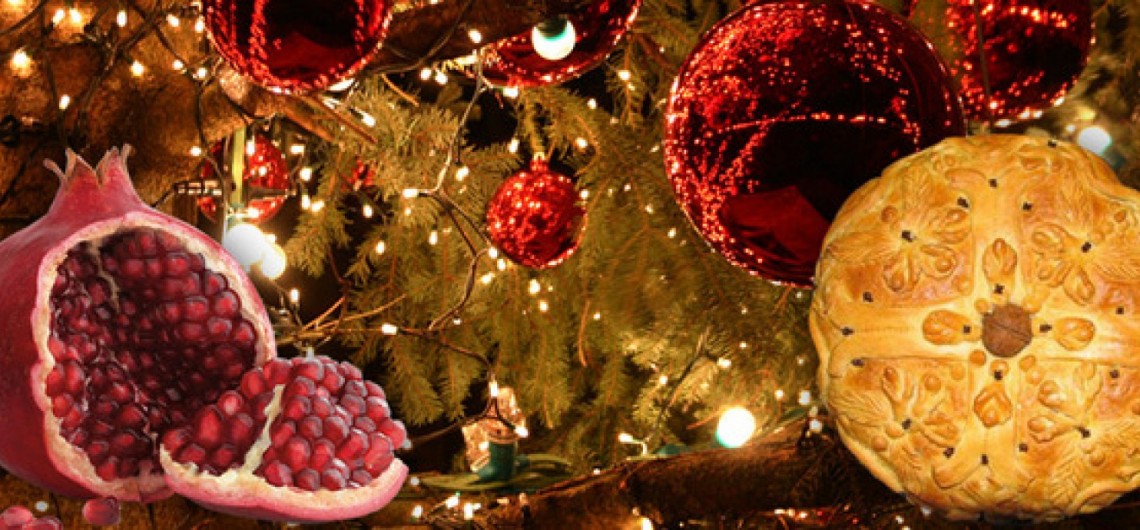

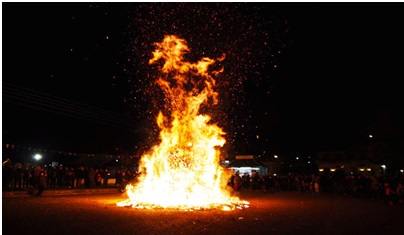
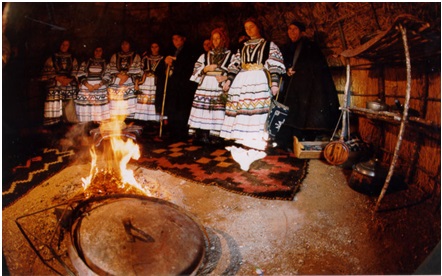
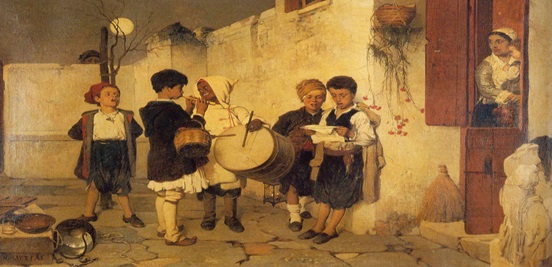
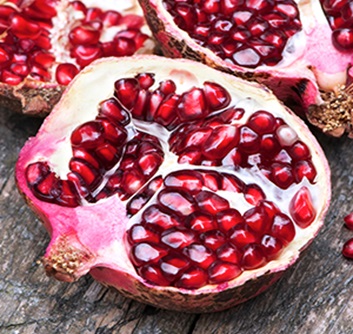
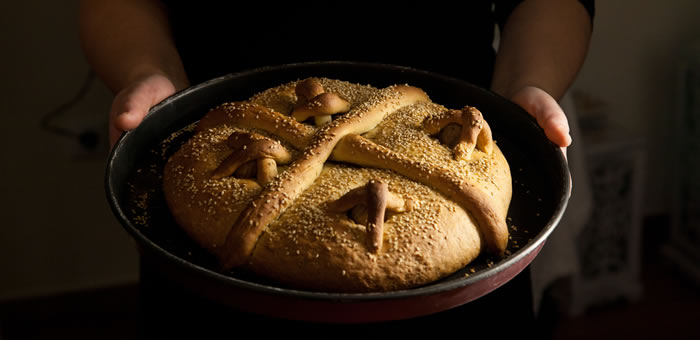
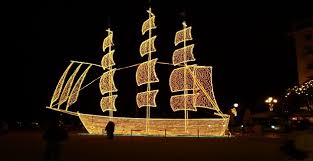
Comments